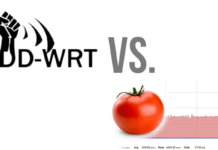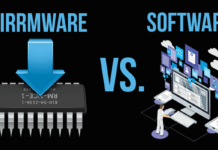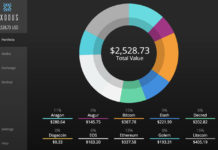Many speculate Bitcoin would be the traditional global currency in the next couple decades, and Hardware wallets would be their “Vaults”. So here we bring forth this Best Bitcoin hardware wallets out to you folks for the time when and if it happens.
Even if Bitcoin doesn’t take over the traditional currency completely, there’s no denying the fact that you’d always want your funds to be secure, no matter how negligible the amount is.
And as of right now, there exists not a platform, exchange or wallet safer than Hardware wallets for the storage of Bitcoins.
But I’m pretty sure, you’re already acquainted with what a Hardware wallet is, or else you wouldn’t have searched for the term on the search engines and landed here on this Best Bitcoin hardware wallets review.
How we’ve Selected these Best Bitcoin Hardware Wallets?
It’s important that we share with you our selection process, so you know it’s based on experience, is legit and isn’t biased. So here’s what we took into account while selecting these best Bitcoin hardware wallets:
- Security: Encryption Protocols/safety from viruses and malware/recovery processes.
- User Interface: How easy (or hard) it is to use the hardware wallet.
- Hardware: Size / Weight
- Pricing: We weighed it on the balance of “features: Price”.
- Currency Support: We also took into consideration if the wallet supports only Bitcoins, or other currencies as well, and if it does, how many and which!
Best Bitcoin Hardware Wallets with Comparison Chart:
So here are the best Bitcoin hardware wallets we’ve had our hands on.
Note: that we’ve used all these wallets personally, and have published individual reviews for each before compiling this all engrossing piece on the “best” of them.
Ratings |  |  |  |  | ||
|---|---|---|---|---|---|---|
Features | Ledger Blue | Ledger Nano S | Keepkey | Trezor | ||
Product Image |  |  |  |  | ||
Privacy | Strong | Very Strong | Strong | Medium | Low | |
Currency Support | BTC, LTC, DOGE, ETH, XRP, BCH, KMD, XMR, DASH and every blockchain assets. | Maximum 100+ | BTC, LTC, DOGE, ETH, XRP, BCH, KMD, XMR, DASH | BTC, LTC, DOGE, ETH, XRP | BTC, LTC, DOGE, ETH, XRP | |
Features | 2 FA Easy to Use Multi-apps support Bluetooth Support 100% Anti-theft Multi Accounts Electrum Wallet support | 2 FA Easy to Use Multi-apps support Bluetooth Support 100 Anti-Theft Smartphone Support Mult Accounts | 2FA Great security Compact size Wide variety of currency support. 100% Anti-hacker setup. | 2FA Paper Wallets Multi Accounts Extensive currency support | Advanced security Many currency support | |
User Experience | High | High | Medium | Low | Low | |
Security | High | High | High | Mediaum | Medium | |
Pricing | 229.00 € | 119.00 € | $68.45 | $99 | 89.00 € | |
Most Read: Best Bitcoins Wallets or Mobile/Desktop/Web
After this comparison chart, I am describing all these four hardware wallets in description form, If you want to read any of these wallet review then you may also read by the help of review button.
Ledger Nano X
![]()
Ledger recently brought out the Nano X. Not that the “S” were at fault, but just because a little extra and more advanced features can never hurt, right?
The shape resembles the Nano S, yet it features a larger screen as well is comparatively heavier. But first, here’ an overview:
- Screen Size :128 x 64 pixels.
- OS Support: Windows, Mac, Linux, Android, iOS.
- Size: 6x 11.75 mm
- Weight: 34 g.
- Installed Assets: 5000 Crypto and Tokens + NFT Support
- Battery: 100mAh.
- Price: EUR €119.00
Buy Hardware Wallet
User-Interface
Ledger Nano X is unique in the sense that you can set it up using your Mobile phones (both Android and iOS) as well as Desktop computers. It also the first Ledger product to fully support Bluetooth connectivity!
Setting it up is straight-forward and self-guided for new users. Fire up Ledger Live > set a Pin > backup the seed > pair it with your device > choose a device password> done!
Security
Any and all security features that the “S” and “Blue” brought with themselves are still intact. Such as the PIN code, Secret wallet (via advanced passphrase) and the Recovery seed.
Then there’s the “Ledger Live PIN” feature which is set on whatever device you’re pairing the X with. It ensures loss of the device wouldn’t result in any data being leaked. Note that the compromise of this password only results in a view-only breach, your funds will still be safe.
Also during setup, the X offers a ton of security advises and precautions. It follows up on them making sure even the newest of users do not leave a loophole.
Currency Support
As is traditional to Ledger, the Ledger X too supports over 5500 Cryptocurrencies in total. Yet, it differs from its predecessors as it allows over 100 different assets to be installed at the same time on the Ledger X.
Pricing
It’s price at EUR € 119.00. It also offers a “Backup package“, which contains both the Ledger Nano X and the Ledger Nano S, it costs €149.00. So you’re technically getting a 50% discount on the Nano S when purchased with the Nano X.
The pricing compared to the features seems totally reasonable and the Backup package makes it all the more interesting.
Buy Hardware Wallet
Ledger Nano S Plus
![]() Another contribution that the Ledger has made to the Bitcoin community is its Ledger Nano S plus wallet.
Another contribution that the Ledger has made to the Bitcoin community is its Ledger Nano S plus wallet.
It resembles Trezor wallet in quite a few features, but then again there are quite a few differences that set it apart as well.
So before proceeding further, here’s an overview of the Ledger Nano S plus:
- Material: It uses “Brushed steel” along with plastic for added durability.
- Chip: ST31H320 + STM 32F042
- Size: 98 X 8 X 9 (mm)
- Weight: 16.2gm
- Connector: USB Type Micro-B.
- Price: €58.00
a. Size and Weight
It’s the second most-lightweight hardware wallet on this list. Weighing nearly 7 times less than the Ledger Blue, and couple grams less than any other Hardware wallet in its league.
The fact that it weighs just 16g. Even after being made out of “polished steel” definitely deserves praises. As far as the size goes, it is much smaller than the Ledger Blue wallet, Trezor or KeepKey (probably that’s what the word “Nano” stands for).
b. Security
When it comes to security, the Ledger Nano offers nearly the same features as any other wallet on this best hardware Bitcoin wallet list.
The only perk the Ledger Nano S enjoys and offers over the other hardware Bitcoin wallets is its 8-digit PIN setup, apart from that most of the other security features are the same, the general features include:
- Recovery Seed: The 24-word recovery seed that every other wallet on this list offers, which helps you recover your account, also acts as a paper wallet.
- Isolated Private Keys: So that your keys are never exposed to the Internet or any other un-intended third party.
- Transaction authentications: Every single transaction needs to be authenticated manually, which also is the case with the Ledger Blue, Trezor or Keepkey.
- 8-Digit Security PIN: Being true to the Ledger community, the Ledger Nano S too offers you the opportunity to setup 8 digit PINs instead of just 4 like most other “non-Ledger” hardware Bitcoin wallets out there.
- Isolated Setup: Just like the Trezor, or the Ledger Blue the Ledger Nano S plus too can be setup without being connected to any system or the Internet, hence guaranteeing a 100% isolated setup.
- Anti-Hacker: The recovery seed isn’t displayed on the computer, ever! So this makes sure that even if your computer is infected or hacked, your recovery seed is safe and only known to you.
- Duress Account: The Ledger Nano S is all set to protect and secure your Bitcoins, this is one of the primary reasons why we’ve included it in this list of the best Bitcoin hardware wallets. It lets us set a “Duress account” which is accessed via an alternate PIN, it helps you get out of a situation where you’re forced to share your PIN with perpetrators.
- AutoLock: This automatically locks the Ledger Nano S wallet after a certain period of inactivity.
You should read our Ledger Nano S Wallet Review for a detailed review on the same, but bottomline, for now, is that it’s a secure hardware wallet, probably the most secure if you exclude the Blue from the competition.
c. User-Interface
It’s used exactly the same client that the Ledger Blue does, so it’s obviously sleek, and easy to use.
Although when compared to Trezor or KeepKey, those two do not hold as up as good as the Ledger Nano S on this front, they’re good no doubt but there’s a certain amount of “simplicity” to the Ledger Nano S’s user-interface that the other two wallets lack.
So that’s another reason why the Nano S has been put on top of the Trezor or KeepKey on this best Bitcoin hardware wallets list.
d. Currency Support
Just like the Ledger Nano X, it again supports more than 5500 crypto and alt tokens:
Now there’s nothing “Special” or unique considering how almost all the other hardware wallets on this best Bitcoin hardware wallets list support most of these currencies.
e. Pricing:
Priced at €79.00, the Ledger Nano S plus is probably the cheapest hardware wallet in the industry. And this is what gets it the edge, as when compared to Trezor or KeepKey, it offers nearly the same features, but at a fraction of Trezor’s price.
Buy Hardware Wallet
So that pushes the ball towards Ledger’s court, considering how you get most of the “hardware wallet” features, without having to mortgage your house.
Trezor Hardware Wallet
![]() After we’ve got the Ledger duo out of the way, Trezor crypto wallet is the next name that would pop up on anyone’s radar when talking of the best Bitcoin hardware wallets.
After we’ve got the Ledger duo out of the way, Trezor crypto wallet is the next name that would pop up on anyone’s radar when talking of the best Bitcoin hardware wallets.
Trezor is one of the oldest hardware Bitcoin wallets existing in the industry, and as mentioned earlier it does resemble the Leger Nano S on some fronts.
Here’s an overview of the device:
- CPU / Speed and Processor: 120 MHz Arm Cortex M-3 Processor.
- Screen Size and Quality: 128X64 pixels OLED screen.
- OS Support: Windows, Mac, Linux, Android.
- Size: 60 X 30 X 6 (mm).
- Weight: 12g (0.42oz)
- Temperature: 20-60 Degree Celsius.
- Price: €89.00
Buy Hardware Wallet
a. Size and Weight:
Even though it’s slightly bigger in size compared to the Ledger Nano S, it manages to make itself the “most-lightweight” wallet in the industry pertaining to the fact that it’s made out of plastic and not metal.
Weighing just 12 grams, that’s 4 grams lower than the Ledger Nano S, and nearly 10times lower than the Ledger Blue.
So if you’re hunting for a wallet which you can carry on you without even noticing it’s there, then Trezor should be your new best friend!
b. Security
Trezor, alike the Ledger Nano S comes with two physical buttons, but these are placed on the front-panel instead of the sides like the Ledger.
These buttons are used to confirm each transaction manually and to get any other kind of authentications.
The one aspect where Ledger’s both the products outrun Trezor is that Ledgers can be setup without being connected to any system or Internet, while Trezor needs to be connected to your computer during the setup process.(Although the PIN is showed only on the Trezor device, still it’s not as safe as totally providing an isolated setup like the Ledgers).
Overall, the other security features include:
- 4-Digit PIN: It does offer PIN authentication like all other Hardware wallets on this list of the best Bitcoin hardware wallets, but then again it slightly falls short as it offers only 4-digit PINs and not 8-digits to contest the Ledgers.
- Passphrase: Again, getting itself in sync with the other wallets in the industry, it offers “hidden wallets” which can be accessed only via a passphrase.
- Instant Wipe: Let’s you instantly wipe your Trezor device in case of an emergency or for any other reason, although you can restore your funds using the 24-word seed.
- 24-word seed: Recover your funds, or use it as a paper backup , the choice is yours. Basically, the seeds are the ultimate guardian angels for your funds.
- Auto-shuffle: The PIN shuffles on the Trezor after each click, this makes sure that even though you’re typing the PIN on your computer, the system, or any unwanted third-party who might have access to your system doesn’t get access to the PIN being typed.
- Isolated Private Key storage: Your private keys are stored in an offline environment, and it’s probably the most basic fact about any other Hardware wallet on this list.
c. User-Interface:
The user-interface can be accessed via a Google chrome extension, or a bridge in the case of other browsers.
It’s “more detailed” as compared to the Interface at Ledger’s, but I personally feel the charts and graphs only complicate things.
But if you’re a nerd for data, this one is for you.
Apart from that, the interface is pretty simple and easy to use, with the header having all the primary options, and the left-sidebar acting as an “extra settings” kind of navigation bar.
When compared to Ledger or the Ledger Nano S, we can’t term anyone “better” than the other, cause both of these are here on this best Bitcoin hardware wallets page, offer nearly the same experience, and are easy to use. So it’s just a matter of personal choice.
d. Currency Support:
Trezor totally wins you over when it comes to currency support. It supports nearly all the altcoins and Bitcoin forks, including:
- Bitcoin
- Ethereum
- Dash
- Doge
- ZCash
- Litecoin
- Bitcoins
- Ethereum Classic
- Bitcoin Testnet
- And even EC20- Tokens
e. Pricing
Trezor is priced at €89.00, nearly €30.00 more than Ledger, but being honest there isn’t anything that special with Trezor for you to pay that extra €30.00.
Buy Hardware Wallet
Obviously, it’s one of the best Bitcoin hardware wallets, but the pricing seems a bit too far-fetched for the fact that Ledger Nano is already offering almost exactly the same features, at a much lower cost.
KeepKey Hardware Wallet
![]() And now finally for the last contestant on this best Bitcoin hardware wallets list, KeepKey.
And now finally for the last contestant on this best Bitcoin hardware wallets list, KeepKey.
KeepKey isn’t a new face in the game, and when compared to Trezor or Ledger Nano, it in no way comes up short on popularity, security, or any other feature.
Here’s an overview of KeepKey before we proceed to dissect it by every inch of its existence:
- Materials used: Polycarbonate and Aluminium.
- CPU: Arm Cortex M-3
- 2.56 X 64 OLED Screen.
- Height: 38.0mm
- Width: 93.5mm
- Depth: 12.2mm
- Connector: Micro USB
- OS Supported: Windows/Linux/Mac
- Price: $99.
a. Size and Weight
KeepKey essentially is the “largest” in size when compared to Trezor or the Ledger Nano S. The larger size also accounts for a larger screen, which has added security benefits which we’ll address in the security section.
Also, the KeepKey alike Ledger but Unlike Trezor is made out of “metal” (Aluminium) while Trezor that of plastic. So that means all the more durability to KeepKey.
So just because it’s being listed at the very last of this best Bitcoin hardware wallets review, doesn’t by a far stretch mean it’s not a good wallet.
But then again, the added size does mean that it’s not as compact or portable as the other two wallets we’ve been talking about.
b. Security
We mentioned how KeepKey has a larger screen, so that adds to the extra feature of the wallet recovery using a Cipher.
But here the Ledger Nano S has a slight edge considering the fact that it uses two chips while the Trezor or KeepKey don’t.
In addition, the other security features include:
- Recovery Phrase
- Alternate / Hidden Wallets
- Paper Backups and Paper Wallet Support.
- Mandatory Manual Confirmation.
There aren’t any “wow” or “Nay” features per say, the exact same features can be found with the Blue / Nano or the Trezor as well.
c. User-Interface
Okay, this is one aspect where I personally feel KeepKey beats all its competition and hence has earned its spot on this best Bitcoin hardware wallets list.
It offers the simplest, “least-fuss” user-interface with its client. That obviously mean less data, or less features, but if you’re one for simply “sending/receiving funds and checking transactions”, it couldn’t get any simpler.
There are no data, graphs or any extra information, the client in itself has been crafted beautifully.
d. Currency Support
KeepKey doesn’t support any coin which the other wallets on this best Bitcoin hardware wallets list don’t, but then again it’s not void of extensive currency support either.
It supports all the altcoins, which include:
- Testnet
- Namecoin
- Ethereum
- DogeCoin
- Dash
- Litecoin.
e. Pricing
It’s priced at $99 USD, which translates to nearly the same amount as the Trezor in Euros. Considering how it has a bigger size, and is made out of aluminum instead of plastic, I’d vote for KeepKey over Trezor when weighed on the “features: price” ratio.
When compared to Ledger Nano S, it offers a bigger screen, so paying the extra amount compared to Ledger’s price is justified.
Archos Safe-T Mini
Archos Safe-T Mini isn’t as feature-rich or experienced in Bitcoin safe-keeping as the other options mentioned above, yet it does its best which for most users is quite sufficient considering how it’s also the lowest-priced Bitcoin Hardware wallet 2019 on this list.
This here is the traditional overview of the Safe-T mini before getting you a deeper insight:
- CPU: 120 MHz ARM processor Cortex-M3
- Size: 45mm x 7.5mm
- Weight: 12gm.
- Connector: Micro USB : 500mm
- Screen: 128x64p / OLED
- OS Supported: Windows, MAC OS X, Linux
- Price: €49.99
a. Size and Weight
The Archos wins against the KeepKey if it’s “Portability” you’re looking for, considering how it weighs only 12 grams, and is sized at 45 mm X 7.5mm dimensions.
Also, unlike most other wallets its not a Square or a Rectangle, rather is circular in shape which does account for better pocket-management.
b. User Interface
Setting it up or initiating coin deposits is pretty simple and straight-forward, users can go to http://www.safe-t.io./start, download the bridge/firmware depending on their OS and then move on with the installation.
Once it’s installed, users get to choose from “Create Wallet” (for first-timers) or “Recover wallet” if you previously owned a Safe-T mini and lost it.
The next steps involve writing down the recovery phrase, setting a device name and PIN. Although it’s unique in the sense that users get to choose their primary or native Cryptocurrency while setup and it doesn’t have one pre-set.
What this means is, rather than having its own complicated UI, it uses UIs from other platforms, such as Electrum to send/receive funds.
Bottomline, how complicated or easy you find using Safe-T mini would depend on which currency you’re working with. Although, it won’t ever be rocket-science as far as my experience goes.
c. Security
It’s not as impressive as Trezor or Nano S when it comes to security, although does provide a Recovery seed which can be used to recover the funds in case the physical wallet is lost.
The 6-digit PIN obviously is there for all major actions on the Wallet. Also alike all other wallets, all actions need to be manually and physically confirmed using the wallet keys.
All transaction information is displayed on the device screen ensuring there’s no modification or alteration of the values (address/ amount) entered on the screen and the one being displayed on the device where the funds are actually being sent to.
d. Currency Support
It’s big on Currency support, infact supports more currencies than most Bitcoin Hardware wallets on this list which include:
- Bitcoin (BTC)
- Ether Classic (ETC)
- (ETC)
- ERC20 Token
- Bitcoin Cash (BCH)
- Bitcoin Gold (BTG)
- Litecoin (LTC)
- Dash (DSH)
- Ether (ETH)
Pricing
As already mentioned, it’s probably the cheapest wallet on this list amounting to only EUR 49.00. It does lack couple hardcore security features but considering the price-drop, and the fact that those features don’t actually make the wallet extremely vulnerable, I do think it’s acceptable.
Do you want to buy bitcoins or looking some good guides related to bitcoins then check out below given some selected articles for you, where I cover mostly available bitcoins wallets.
Billfodl Bitcoin Hardware Wallet
I’m confident you’ve found your favorite hardware wallet by now. If you’re still confused, just pick Ledger Blue, you wouldn’t regret it.
Now, Billfodl is NOT exactly a hardware wallet! However, it’s something you should consider in addition to your hardware wallet. In fact, even if you have software BTC wallets, Billfodl is for you.
- Size: 104mm х 58 mm х 5mm (4.1in х 2.3in х 0.2in)
- Weight: 0.4kg (14 oz)
- Screen: N//A
- OS Supported: All wallets both hardware and software.
- Price: $99.00
- Refund policy: 125%, 10 years.
These are similar to an offline, cold-storage, hardware wallet but has its differences. These are called steel wallets. They do not exactly hold your “coins” per se, rather the private keys/recovery phrases/mnemonic codes, whatever you call them.
Now, writing down the code on a piece of paper does work. But, it may still get stolen, hit by natural disasters, humidity, corrode over time, or you lose access some other way (banks restricting access to your vault, demanding KYC, etc.).
Billfodl records your mnemonic codes by physically laser-engraving them on steel! 24 words/96 character codes are supported! It uses 316 Marine Grade Stainless Steel and hence is quite literally “indestructible”. House fires, water, or corrosion over time are just not possible.
Similarly, because it’s not “digital” it can’t be hacked, and it’s completely resistant to any shock or electrical damage either!
It even protects from “offline” hackers if you go with the “Multishard” version of it. That version includes 3 Billfodls so you can split your recovery phrase onto 3 separate devices. Although it sure is a bit expensive, priced at $267 as compared to the normal Billfodl priced at just $99.00.
Now, the reason we included this here is its unprecedented 125% moneyback guarantee, valid for 10 YEARS! Meaning, if you don’t like Billfodl for any reason, you not only get your money back, but 25% extra!
D’Cent Biometric Bitcoin Hardware Wallet
D’Cent is arguably one of the most advanced hardware wallets you can get your hands on. Surprisingly, it’s also one of the cheapest. Here are its specifications:
- Get: https://dcentwallet.com/products/BiometricWallet
- Weight: 36g
- The Size:2 X 43.2 X 10.8 mm
- Connector:5-PIN USB/ OTG
- Bluetooth:Yes
- Fingerprint: Yes
- Supported Cryptocurrencies: Most of them
- Screen Size and Pixels:1.1 inches / 128 X 128 Pixels.
- Price: $130.00
The “Biometric” in the name stands for its prime feature- fingerprint recognition. This makes all and any authentications a lot faster and secure.
Obviously, you can also use the more traditional PIN if you wish to.
It also allows setting up the device “without” connecting it to any third-party program/software.
All the major Cryptocurrencies, and most altcoins are supported and can be stored. You can even create multiple wallets for the same Cryptocurrency!
There’s obviously a 24-word recovery key. It’s battery-operated and can be used without any cables or connections.
The wallet is very reasonably priced at just $130.00.
Passport Foundation Hadware Wallet
Passport Foundation is one of the most conservative, limited and yet secure hardware wallets out there.
- Get: https://foundationdevices.com/
- The Size: 9mmx 110.8mm x 19.2mm
- Connector: USB-C (charge only)
- Bluetooth:No
- Fingerprint: No
- WiFi: No
- Supported Cryptocurrencies: Only Bitcoin
- Price: $259.00
It’s a Bitcoin-only wallet. No other cryptocurrencies are supported. However, it can be connected to a number of software crypto wallets such as Ethereum, Wasabi and many others.
It’s open-source which is a massive trust-booster. It’s also airgapped. Meaning, there are no USB ports or wireless connections available. There is a USB port but it’s only for charging the wallet.
It can be used with the Envoy mobile app. The app is how you control and use most of the wallet. The wallet itself uses an in-built camera to scan QR codes for most of your transactions.
It has a MicroSD slot that lets you use memory cards to store data and recovery phrases.
It has a pretty impressive touch screen panel that lets you get most things done without getting confused. Physical keypad exists as well.
For security, it allows setting up a 6-12 digit security PIN. A 12-24 word recovery phrase too can be created. It’s priced at $259.00.
Keystone Essential Hardware Wallet
I believe the Keystone Essential resembles the Passport Foundation (mentioned above) in many factors. Obviously, it has its differences.
- Get: https://shop.keyst.one/products/keystone-essential
- The Size: 112mm x 65mm x 18mm
- Weight: 115g
- Connector: USB-C (charge only)
- Bluetooth:No
- Fingerprint: Yes
- WiFi: No
- Supported Cryptocurrencies: Most Cryptocurrencies
- Screen Size: 4 inches
- Price: $119.00
The Keystone Essential too is an airgapped hardware wallet. Meaning, it too doesn’t support USB or WiFi connections. You can sign transactions using its camera and QR codes. Without doubt, this is comparatively more secure.
It does support a wide range of Cryptocurrencies, including but not limited to BTC, XRP, ETH, DASH, Poladot and many others.
For security, you can use the passphrase or the recovery phrase to recover your funds. A pattern can be set as well, thanks to its 4” touch screen. There’s also a fingerprint sensor but it’s only in the Pro model.
It self-destructs if you incorrectly enter the main password 5 times. Any hardware altercations too will self-destruct the device.
It too lets you create multiple addresses for the same Cryptocurrency.
Are Hardware wallets 100% secure?
Before you make a purchase, it’s best if you know the ground-reality. Bitcoin Hardware wallets are secure, arguably the most secure way to store Cryptocurrencies, no doubt.
However, they aren’t 100% hack-proof. Nothing on the planet is actually. Here are the weakest points you should guard yourselves against while purchasing Hardware wallets:
- Second-hand /Used wallet: Never, under any circumstances purchase a used/second-hand Bitcoin hardware wallet, regardless of how cheap the pricing is. The owner can easily gain access to your funds using his/her recovery key.
- Installed backdoors: You’ll often see ads for new Hardware wallets. Or those you’ve unheard of. There’s a very strong chance these are govt. companies controlled in part of entirely by any of the govt. organizations. Back in 2014, the NSA was caught installing backdoors in routers from legitimate companies, before shipping them off to legitimate buyers. Hence, only go with the most established, reputed and preferably open-source companies (e.g. Trezor).
- Insecure RNG: The private keys are generated using random-number-generators. These are extremely secure, but again not completely out of the scope of replication. There is a teensy-weensy chance that the key may be re-generated by a hacker/third-party at a later time. This is why we advise using atleast 2 or more Hardware wallets especially for long-term holding.
Bottomline, trust Hardware wallets but with the necessary precautions.
Ledger Blue Hardware Wallet
The Ledger Blue has promised the stars to the Bitcoin community. Fort Knox-like security, a mobile-like display screen and what not.
So, without doubt, it’s one of the most anticipated Hardware wallets existing on the planet as of today. Here’s an overview of the wallet:
- It weighs 90 grams.
- The Size: 97 X 68 X 10mm
- Connector: USB Type Micro-B
- Materials used: Plastic and Zemak has been used along with Neodymium magnets.
- Support OS: Windows/Linux/Mac/Chrome OS
- Chipset: ST31G480 +STM32L476
- Screen Size and Pixels: 3”5 inches / 320 X 280 Pixels.
a. Size and Weight
Let me start by saying that, it’s not the most lightweight wallet in the industry, it weighs well over 90grams while most other wallets are below 20 gms.
But that can’t be held against it considering how it’s also bigger in size, and is providing a completely interactive touch-screen display.
Talking of the screen, well it boasts a 3”5 inches screen, which is a revolution considering no other hardware wallet in the industry has an “Interactive touch-screen”.
The Trezor, KeepKey, not even the Ledger Nano S can talk of having a “touchscreen”, instead, they take you back into the feel of the 1950s, pressing physical buttons with limited display for every action.
So the Ledger Blue essentially changed things quite a bit.
b. Security
After we’ve got the weight and size out of the way, let’s give a thought to the more “practical” matters pertaining to any hardware Bitcoin wallet, security for example?
The fact that it has a “touch and type” screen provides for an “isolated environment”. No connection to any computer or Internet is required for you to setup the device, which is in a direct contrast with any other hardware wallets out there including the KeepKey or Trezor.
Apart from the “isolated environment”, the reason why the Ledger Blue is on top of this best Bitcoin hardware wallets’ list is because it also supports 8 digit PINs, while again most of its contemporaries support only 4-digits.
Those aren’t the only factors separating the Ledger Blue from the rest of the industry, it also has an inbuilt WYSIWYS measure to authenticate digital signatures and prevent fraudulent man-in-the middle and other attacks as such.
These three were the most unique feathers in the cap of the Ledger Blue which earn it the position of the “best” hardware Bitcoin wallet in the industry.
Although other traditional security features like:
- The Passphrase: An extra word to the 24-word long recovery phrase which unlocks a hidden wallet.
- Alternate PIN: To access the hidden, passphrase-wallet.
- 2FA Support: YES
- Transaction Verification: Yes, By the help of Touch Device
Bottomline, it has all the security features that any other device on this best Bitcoin hardware wallets list does, and then some.
c. User-Interface
This is the only hardware Bitcoin wallet in the industry having an “User-interface” of its own, on the hardware device itself.
As none of the other wallets have a fully interactive “Screen”, the only user-interface they can boast of is their “Chrome or login clients” on computers.
But the Ledger Blue has this screen on the hardware wallet which has a neatly designed interface with apps on it, allows for easy management of accounts, as well as installation and removal of the applications.
d. Currency Support
It supports over nine different currencies, which is most probably the most extensive list of supported currencies by any Hardware Bitcoin wallet out there.
The currencies include Ethereum, Bitcoin Cash, Ripple, Tendermint, Monero etc. But even the Ledger Nano S, KeepKey, or Trezor support most of these Altcoins, so there’s not much of a head start the Ledger Blue has on this front.
e. Pricing
As far as the pricing goes, it can be pre-ordered from their official website, starting at Euro €229.00. Compared to the other wallets in this best Bitcoin hardware wallets list, this is the most-expensive device.
But hey, it also is the most feature rich, and the most-secure hardware wallet and when compared on the features:price ratio, it totally seems like a fair price to pay.
Bottomline, it’s totally worth being placed on the #1 position as the best Bitcoin hardware wallet. On all the fronts, including the features, security, UI, and pricing it surpasses all the other wallets on this list.
Best Security Precautions When Using Hardware Wallets
Hey, we get it. If you found your hardware wallet, go on and start using it. However, it just feels like right to make sure you know “how” exactly to use your hardware wallet. Else, wouldn’t it be our fault if you get a Bitcoin hardware wallet on our recommendation, and lose your funds because we failed to share the necessary precautions?
So, first and foremost, never ever, under any circumstances, share or show your recovery phrase to anyone. It’s your masterkey. With this recovery phrase alone, all of your funds can be stolen, remotely, without even knowing who you are or touching your device.
Similarly, never take “snapshots” or photos of your recovery phrase. You shouldn’t even trust the best password managers to store your recovery phrase.
The best practice is to write your recovery phrase down, but, only if you can store it in a bank vault. Need a simpler method? No bank vault needed, but, write your recovery phrase down with a code. Maybe reverse it, jumble it, but make sure you can decode it later.
Secondly, always verify the receiving address on your hardware wallet screen. Never trust addresses shown on your computer screens. Wallets like the Ledger have impressive screen-sizes to help you avoid being scammed.
Finally, it may be a bit extreme, but, it’s best if you keep your entire hardware wallet in a bank vault. That’s the safest place it can go. And hey, the wallet is more like a “vault” in itself than an ATM card. Hence, make sure you use it as rarely as possible and not for intra-day transactions.
Final Words
So that’s a wrap as far as the best Bitcoin hardware wallets are concerned. The crown for the “best hardware Bitcoin wallet” without doubt rests with the Ledger Blue.
But taking it out of the competition for the unfair advantage that it has of offering an interactive screen, all the other hardware wallets on this list equally deserve the crown as well.
As you might have seen, there isn’t much of a “features” difference. The only difference there is, is for the materials used, pricing plans, or size.
Either way, do make your choice and let me know the wallet you go with. Your opinion matters.



















